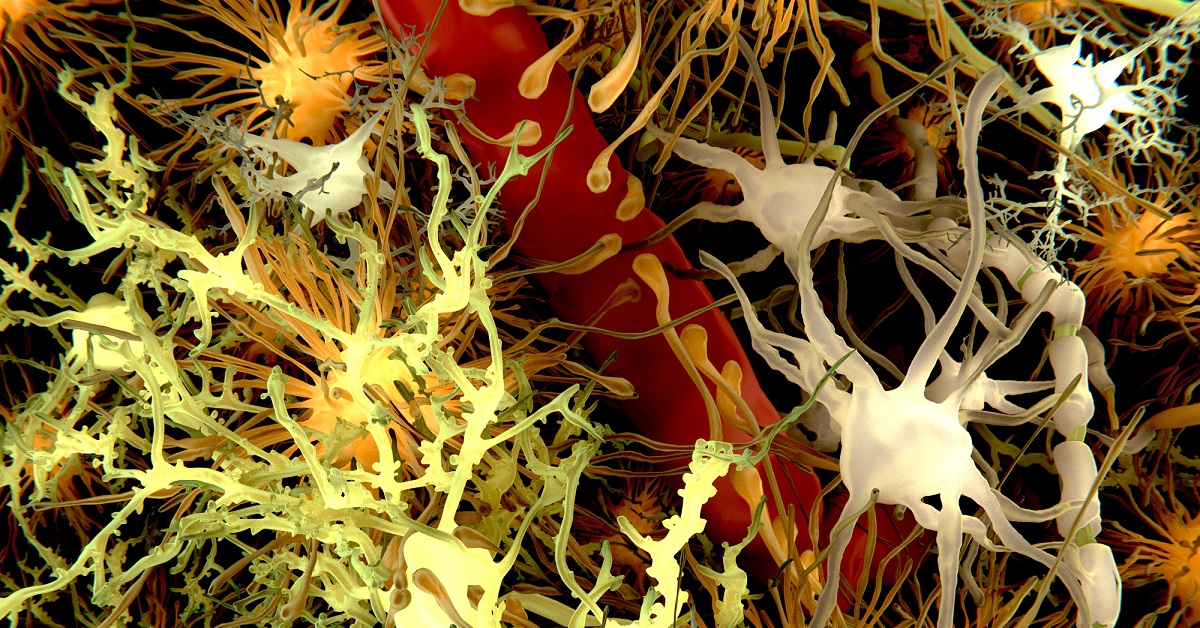When it comes to memory-robbing brain proteins, amyloid and tau top the list.
Lately, scientists are investigating how these can be removed from the brain once they’ve grown out of control, or better still, how their formation can be prevented in the first place.
In breakthrough research, scientists identified two genes that help clear both amyloid and tau proteins from the brain at the same time. Although the role of these proteins is still unclear, they continue to be the focus of much Alzheimer’s research, and recently it does begin to look like tau – more than beta amyloid — figures in memory loss.
So, the new gene discovery could one day lead to a valuable new therapy for Alzheimer’s.
Meanwhile, here’s the story and what you can do right now to use it to help your brain.
The new research centers on a type of immune cell in the brain called the microglia. Microglia cells protect brain cells, remove damaged brain cells, and keep the central nervous system working well. As you can imagine, the work they do is vital to maintaining a sharp memory.
This is why scientists at Washington University School of Medicine led a large international team in a study of these cells, or more specifically, into two genes that operate within microglia cells.
Gene Research Reveals Discovery of Memory Saving T Protein
The first gene, MS4A4A, is linked to the development of Alzheimer’s disease. The second gene, called TREM2, can undergo a rare genetic mutation that was also strongly linked to the development of Alzheimer’s disease in earlier research.
Scientists believe both genes influence the risk of Alzheimer’s by altering levels of a protein of the same name, TREM2. For clarity’s sake in this article we’ll call the TREM2 protein the T protein.
The T protein plays a critical role in the activation and survival of microglia immune cells and may help them clear excess amyloid and tau from the brain. But scientists wanted to see what role the T protein plays in the protection against or development of Alzheimer’s.
For the study, the scientists measured levels of T protein in the cerebrospinal fluid of 813 people aged between 55 and 90. Of these, 169 were cognitively healthy and 172 had been diagnosed with Alzheimer’s, while the rest had varying degrees of memory loss.
Scientists also carried out extensive tests on the participants’ DNA to find genetic variations that could influence T protein levels in the cerebrospinal fluid (which I’m going to call CSF for simplicity). After conducting their analysis, they validated their discoveries in another group of 580 older adults.
Here’s what scientists found:
- a) one variant of MS4A4A is linked to lower levels of T protein in the CSF, and this increases the risk of developing Alzheimer’s.
- b) another variant is linked to higher levels of T protein in the CSF, and this protects against Alzheimer’s.
If scientists can find a way to raise T protein levels, they could substantially reduce the risk of developing Alzheimer’s.
Opens the Door to New Treatments
One member of the research team, Dr. Celeste Karch, commented:
“Before this study…it was not clear if TREM2 [the protein, not the gene] was involved in Alzheimer’s in general. It was not clear if higher or lower levels of TREM2 were good or bad in relation to Alzheimer’s.
“In this study we reported for the first time that MS4A4A is the major regulator of TREM2 [protein] levels. This is important because we are now able to explain the reason why MS4A4A is associated with Alzheimer’s disease, which is by regulating TREM2 [protein].
“One of the most important findings of this study,” she added, “is that we demonstrate that TREM2 [protein] is involved in Alzheimer’s disease in general, and that higher TREM2 [protein] levels are protective. These findings open the door to new therapeutic strategies.”
Another member of the study team, Dr. Bruno A. Benitez, added:
“For the past several years, we’ve been looking at TREM2 protein and increasing our focus on the involvement of the brain’s immune [microglia] cells in Alzheimer’s disease.
“These findings give us a new therapeutic strategy to pursue, one focusing not only on neurons but on how the microglia may be involved in helping to clear damaging proteins, such as beta amyloid and tau, that are linked to Alzheimer’s disease.”
Supporting Your T Protein and Microglia Cells
While elevating your levels of T protein may protect against Alzheimer’s disease or even slow its development, there’s not yet a clinically proven way to directly influence T levels.
However, you can support the health of the microglia immune cells by reducing oxidative stress and inflammation in your body and brain.
You can do this by following advice we write about in this newsletter regularly, such as getting adequate amounts of sleep, exercising regularly, and maintaining a healthy weight, as well as eating foods high in the plant flavonoid quercetin.
These include capers, apples and onions. Other good sources of quercetin are green peppers, red leaf lettuce, asparagus, broccoli, grapes, beans, tomatoes, and black or green teas. You can also choose a daily quercetin supplement.







